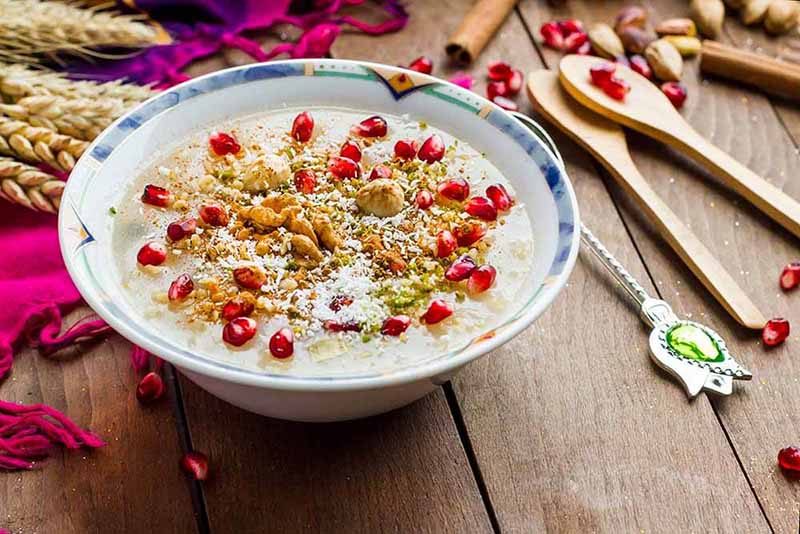The Tradition of Ashura: A Dessert with Deep-Rooted History
Ashura is more than just a Turkish dessert; it is a symbol of history, culture, and faith woven into a rich tapestry of tradition. The word “Ashura” is derived from the Arabic word for “tenth,” referring to the tenth day of Muharram in the Islamic (Hijri) calendar. This day is steeped in religious and historical significance and is associated with ten divine blessings linked to ten different prophets.
Origins and Historical Significance
Contrary to common belief, Ashura is not exclusive to Islamic communities in Anatolia. Christian and Jewish traditions also include similar dishes and rituals that echo the spirit of Ashura, each with their own variations. One of the most well-known stories related to this dish dates back to the time of Prophet Noah. It is said that when the floodwaters receded and the ark came to rest, Noah and his followers gathered the remaining provisions to prepare a communal meal; believed to be the origin of Ashura.
Miraculous Events Associated with Ashura
Over time, Ashura has become a symbol of numerous miraculous events and divine interventions associated with various prophets. The tenth day of Muharram commemorates:
- The parting of the Red Sea by Prophet Moses.
- The resting of Noah’s Ark on Mount Cudi.
- Prophet Yunus’s release from the belly of the fish.
- The acceptance of Prophet Adam’s repentance.
- The healing of Saint Job (Eyüp) from his illness.
- The birth of Prophet Jesus and Prophet Ishmael.
These events imbue the dish with a spiritual weight that elevates it far beyond its culinary identity. Ashura stands as a culinary tribute to faith, patience, and gratitude.
Ashura in Anatolian Culture
In Anatolia, Noah’s pudding has evolved into a deeply rooted communal tradition. Its preparation varies slightly between regions and religious communities, including Christian and Jewish populations, but it always embodies shared values of generosity and remembrance.
Typically prepared on the tenth day of Muharram, this delicious recipe includes ingredients like wheat, beans, chickpeas, dried apricots, and figs. The day is often marked by fasting in both Islamic and Alevi traditions. More than a personal dessert, Ashura is a communal offering; cooked in large pots and distributed to neighbors, friends, and even strangers. Today, this custom lives on in both urban and rural areas, with municipalities and organizations distributing Ashura in public places like mosques, squares, ferries, and buses.
Regional Variations and Recipes
Different regions across Turkey; such as Ordu, Muğla, and Isparta; boast their own unique versions of Ashura, yet the core ingredients remain largely the same. The base is wheat, cooked until soft, then combined with chickpeas, white beans, sugar, raisins, dried apricots, and figs. The dish is simmered until the flavors meld into a sweet, hearty blend.
Ashura is typically garnished with aromatic touches like cinnamon, crushed walnuts, or pomegranate seeds, giving it both flavor and visual appeal. While each version reflects the local palate, all share the same essence: nourishment for the body, soul, and community.

